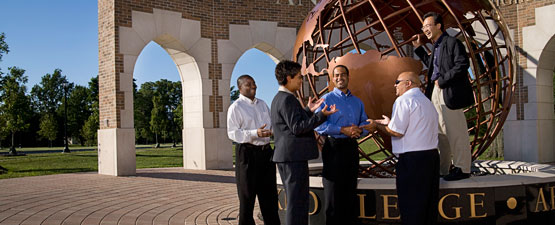Professional Dissertations DMin
Date of Award
2001
Document Type
Project Report
Degree Name
Doctor of Ministry
College
Seventh-day Adventist Theological Seminary
Program
Doctor of Ministry DMin
First Advisor
Nancy Jean Vyhmeister
Second Advisor
Boxter Kharbteng
Third Advisor
Werner K. Vyhmeister
Abstract
The population of the Khasi-Jaintia Conference territory is made up of 80 percent Khasis and 20 percent other ethnic groups. The Khasis, an accepting and happy people, are receptive to the Christian message. This receptivity comes from their monotheistic concept of God and their admiration for the dedicated missionaries who brought the gospel but did not attempt to modify their culture, except for their refusal to accept social evils such as drinking, gambling, and sexual promiscuity. Seventh-day Adventism came to the Khasi region in 1915 with the arrival of E. G. Hardinge and family. The actual work of the Seventh-day Adventist Church started around 1933 with the arrival of the regular missionaries such as the Burgesses, the Barlows, the Ashlocks, and the Langes. The establishment of the Assam Training School provided a center for spreading the Seventh-day Adventist message throughout the Northeastern region of India.
The church grew slowly until 1996, when the Khasi-Jaintia Conference became a separate administrative unit. Earlier, funds, programs, and personnel had to be distributed among all fields. As of the year 2000, the church membership is more than double what it was in 1990. Major factors in the growth of the church during the period were public evangelism in areas where churches and companies already existed, the day-to-day witnessing of members, evangelism through the secondary boarding school, and biological growth.
In spite of the improved growth of the last few years, the task of evangelizing presents a mammoth challenge, given that the Seventh-day Adventists are only 0.3 percent of the population. To enhance the growth rate, the strategies that produced results in the 1990s should be continued and improved. In coordination with already-familiar evangelistic methods, Life Transformation Cell Groups should be developed. These groups will function in local churches, under the supervision of the pastor, with the support of the conference. The groups will provide fellowship, nurture, and an opportunity for outreach. A training program for group leaders will precede the initiation of the groups; further training of groups leaders will maximize the benefits of these groups.
Subject Area
Seventh-day Adventists--India--Meghalaya; Church growth--India--Meghalaya--Seventh-day Adventists
Recommended Citation
Kharbteng, Khrawbor, "Church Growth in the Khasi-Jaintia Conference, Meghalaya, India" (2001). Professional Dissertations DMin. 593.
https://dx.doi.org/10.32597/dmin/593
https://digitalcommons.andrews.edu/dmin/593
Creative Commons License

This work is licensed under a Creative Commons Attribution-No Derivative Works 4.0 International License.
DOI
https://dx.doi.org/10.32597/dmin/593
Files over 3MB may be slow to open. For best results, right-click and select "save as..."



